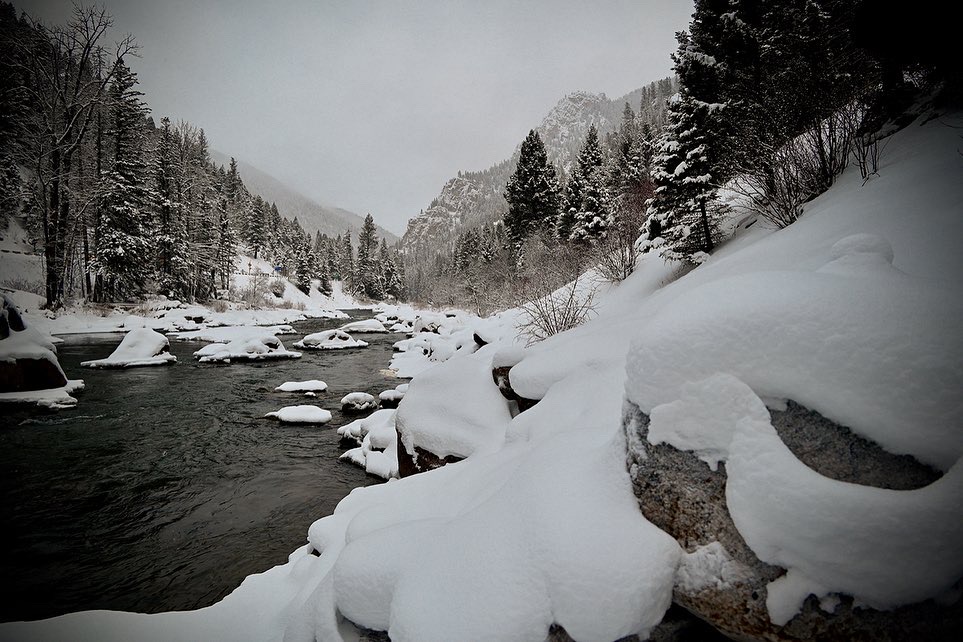Snow is important for a lot of reasons. Good snowfall allows us to enjoy epic ski days, find quiet moments of winter solitude in our forests, or have the perfect reason to cozy up next to a fire. What is likely lower on the list of reasons why we pray for snow is a healthy snowpack as a predictor of drought and spring runoff, and how that relates to water conservation. While we can’t control the amount of snowfall, we can control how we actively engage in our own sources of water use and conservation, being mindful of how those activities are directly related to drought and water supply.
With all of the recent snow, our snowpack is in good shape; though we are no longer in a drought, we are still in what is described as ‘abnormally dry’ conditions. This reminds us that it is important to consider water conservation measures now, and not wait until extreme drought status. Any conservation that happens now will make us more resilient when temperatures rise, and the tougher summer months hit.
Currently, the Gallatin is at 116% of snowpack, which is great. However, there is more to snowpack and drought than meets the eye. If we see early spring runoff and warmer spring temperatures like we have been seeing, even this healthy snowpack will not last us through the summer like we would hope. Our community pulls from the same groundwater aquifer year round; an aquifer that is fed by precipitation in the form of snowfall, snowmelt, and eventually rain. This aquifer provides us with our community drinking water, serves as the source that feeds the Gallatin, and is our ultimate defense against wildfire.
Precipitation is beneficial to our groundwater in any form, and while we are grateful for any and all snowpack that we can accumulate over the winter months, we cannot assume that it will stay long enough to be reliable as a source for our community water year round. That’s where water conservation comes into play.
The slow melt of snow is ideally what we are looking for to preserve our water sources. However, being in a drought-prone region and faced with climate change, spring seasons are less predictable, and summers are only getting hotter and drier, leading to faster snowmelt, lower streamflows, and more wildfires.
Luckily, there are ways to think about and participate in water conservation, even in the winter months. In fact, water conservation is the most cost effective and environmentally friendly way to thrive through drought, stretch water supplies, and protect the Gallatin River.
The Big Sky Water Conservation Program outlines several tactics that are easy to implement, and which can go a long way for conserving our water in all months and seasons of our year. Specifically:
– Check for leaky pipes. Pipes become vulnerable in winter, if not properly winterized or used regularly, pipes can be damaged by freezing and thawing water, which can lead to minor leaks that may not cause large damage to the plumbing system, but can be a tremendous source of wasted water.
– Upgrade your fixtures and apply for rebates. By participating in our indoor and outdoor rebates, you are benefitting the Gallatin by conserving community water sources, and you are saving money on your residential or commercial water and energy bills. Replacing faucets, toilets, and out-dated fixtures and appliances with WaterSense options will do wonders to cut down on your water use, and your bill.
– Get a head start on planning your water-wise garden. Landscape irrigation is the #1 use of water in Big Sky. While we aren’t tending to our plants now, winter is the perfect time to plan your landscape for spring, laying out plenty of ways to reduce your outdoor water use and still have a thriving lawn come summer. Consider how a native landscape could reduce the amount of irrigation needed to make your home and garden beautiful.
Being more mindful of water conservation is a New Year’s resolution that we hope you can get behind, because every drop counts.

